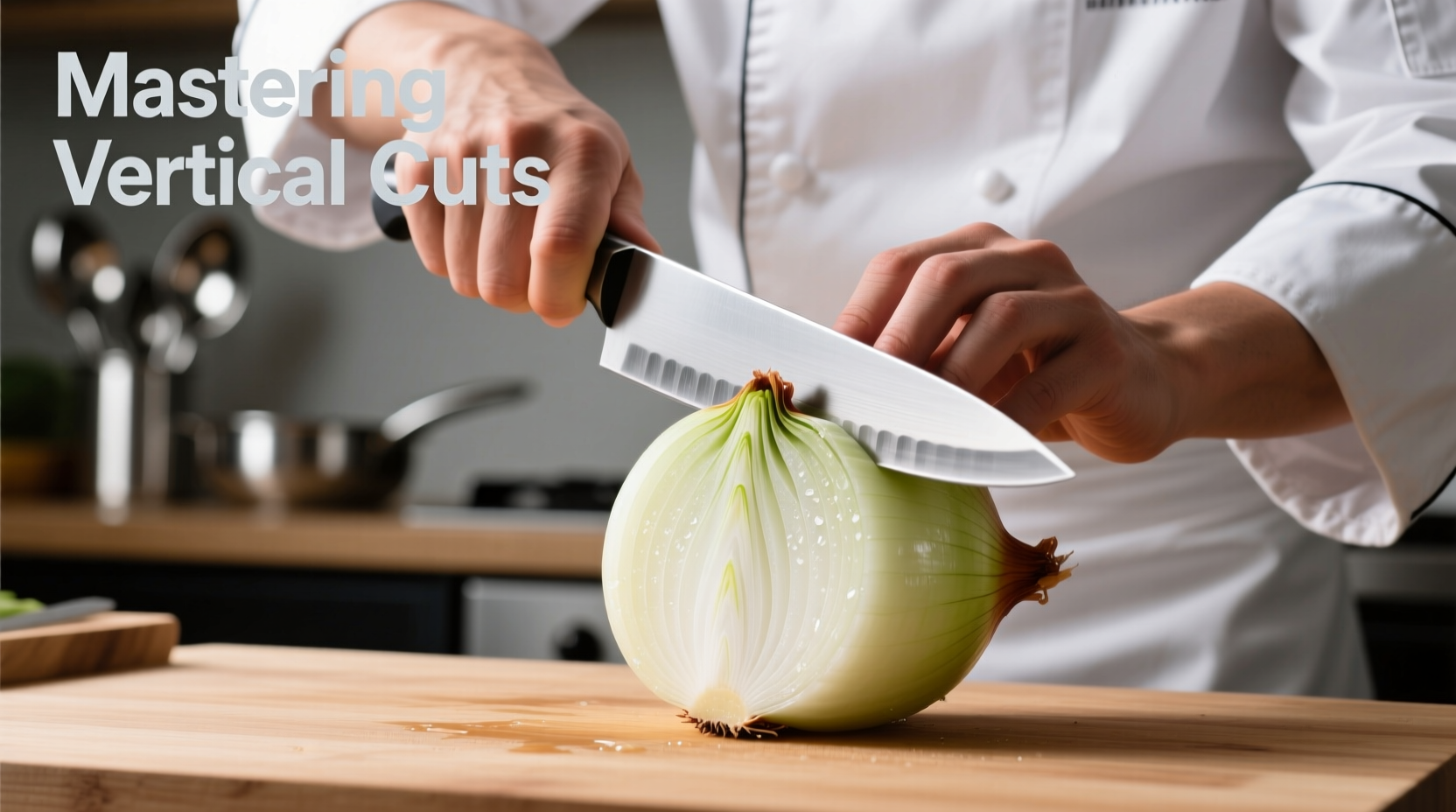Why This Onion Dicing Method Beats Traditional Techniques
Most home cooks struggle with onions, ending up with uneven pieces and watery eyes. The technique described above—the "vertical-horizontal-slice" method—is preferred by culinary professionals for its efficiency and consistency. Unlike the traditional "half then dice" approach that often leads to slipping knives and irregular chunks, this systematic process keeps the onion stable while creating uniform pieces that cook evenly.
Your Essential Onion Dicing Toolkit
You don't need fancy equipment, but the right tools make this quick onion dicing technique for beginners even more effective:
- Sharp chef's knife (8-10 inches): Dull knives crush onion cells, releasing more tear-inducing compounds
- Cutting board: Wood or soft plastic prevents blade dulling
- Bowl of water (optional): Submerging the onion briefly can reduce tears
- Damp paper towel: Wipe knife between cuts for cleaner slicing
| Dicing Method | Time Required | Tear Production | Consistency |
|---|---|---|---|
| Traditional Half-and-Dice | 3-4 minutes | High | Inconsistent |
| Vertical-Horizontal-Slice | 1.5-2 minutes | Low-Moderate | Highly Consistent |
| Food Processor | 1 minute | None | Mushy/Inconsistent |
Step-by-Step: Mastering the Easiest Way to Dice an Onion
Step 1: Prep Your Onion
Place the onion on your cutting board and slice ¼ inch off both the root and stem ends. Remove the papery skin and any dry outer layers. This how to dice onions without crying technique starts with proper preparation to minimize cell damage.
Step 2: Make Vertical Cuts
Stand the onion upright on one flat end. With your knife, make vertical cuts from the top toward the root end, spacing them about ¼-½ inch apart depending on your desired dice size. Crucially, stop cutting about ½ inch before reaching the root—this keeps the onion intact for the next steps.

Step 3: Create Horizontal Slices
Lay the onion on its side. Make 1-2 horizontal cuts through the onion parallel to the cutting board, again stopping short of the root end. This creates the grid pattern needed for perfect dicing. Professional chefs use this professional chef onion dicing method because it maintains control while building the dice structure.
Step 4: Final Slicing
Turn the onion so the root end faces away from you. Slice downward through the onion perpendicular to your previous cuts. The onion should separate into uniform dice as you cut. The root end holds everything together until the final slice.
Step 5: Separate and Store
Cut off the remaining root portion and separate any clumped pieces with your fingers. For best results, transfer diced onions to an airtight container immediately. According to USDA food safety guidelines, properly stored diced onions remain fresh for 7-10 days in the refrigerator.
Avoiding Common Onion Dicing Mistakes
Even with the easiest way to dice an onion, beginners often make these errors:
- Cutting through the root: Without this anchor point, the onion falls apart prematurely
- Using a dull knife: Sharp blades cause less cellular damage, reducing tear production
- Rushing the process: Taking 30 seconds to properly position each cut saves time overall
- Incorrect spacing: Uneven cuts create inconsistent cooking results
Context Matters: When This Method Works Best (and When It Doesn't)
This technique shines for most cooking applications but has specific boundaries:
- Ideal for: Sautéing, soups, stews, salsas, and any recipe requiring uniform pieces
- Less effective for: Caramelizing (where larger pieces work better)
- Not recommended for: Raw applications where texture matters (like onion rings)
- Alternative needed for: Very small quantities (use a rocking knife motion instead)
The American Culinary Federation confirms that consistent piece size is critical for even cooking—varying sizes can lead to some pieces burning while others remain undercooked. This step by step guide to dicing onions ensures uniformity that improves your final dish.
Advanced Tips for Perfect Onion Dicing Every Time
- Cold onions = fewer tears: Refrigerate for 30 minutes before cutting to slow enzyme activity
- Knife angle matters: Hold your blade at a 15-degree angle for cleaner cuts
- Onion variety affects technique: Sweet onions require gentler handling than pungent varieties
- Work quickly: Once cut, onions begin oxidizing which affects flavor and texture
According to research published in the Journal of Food Science, chilling onions reduces the release of syn-propanethial-S-oxide (the compound that makes you cry) by up to 60%. This simple adjustment makes the best knife for dicing onions at home even more effective.
Storing Your Diced Onions Properly
Maximize freshness with these storage tips:
- Use airtight glass containers instead of plastic to prevent odor absorption
- Place a paper towel in the container to absorb excess moisture
- Label with date—diced onions last 7-10 days refrigerated per FDA guidelines
- For longer storage, freeze in ice cube trays covered with water











 浙公网安备
33010002000092号
浙公网安备
33010002000092号 浙B2-20120091-4
浙B2-20120091-4